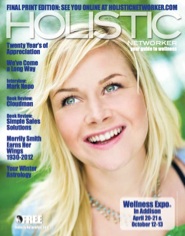 Andrew Taylor Still, MD knew that there was a better way to practice medicine. In the mid-1800’s he watched helplessly as three of his children died of meningitis. Even though he was a physician, he could do nothing to save their lives. Conventional medicine at that time had little to offer for effective treatments. Common practices included blood-letting, mercury compounds, narcotics, and alcohol-based drugs. These unsophisticated treatments often killed the patient before the disease did.
Andrew Taylor Still, MD knew that there was a better way to practice medicine. In the mid-1800’s he watched helplessly as three of his children died of meningitis. Even though he was a physician, he could do nothing to save their lives. Conventional medicine at that time had little to offer for effective treatments. Common practices included blood-letting, mercury compounds, narcotics, and alcohol-based drugs. These unsophisticated treatments often killed the patient before the disease did.
He began to search for better treatment methods that promoted a more holistic approach. In 1874 he founded the field of Osteopathic Medicine. Emphasis on a healthy lifestyle and prevention is at the core of Osteopathy, as exemplified by one of Dr. Still’s famous aphorisms, “To find health should be the object of the doctor. Anyone can find disease.” The roots of Osteopathy stem from the view that the physician should treat the person as a whole, not just the symptoms of a disease.
The philosophy of Osteopathy can be summed up in the following four principles:
1. The body is a unit: the person is a unit of body, mind, and spirit.
2. The body is capable of self-regulation, self-healing, and health maintenance.
3. Structure and function are reciprocally interrelated.
4. Rational treatment is based upon an understanding of the principles of body unity, self-regulation, and the interrelationship of structure and function.
Dr. Still worked extensively with the musculoskeletal system and connective tissue, known as fascia. He realized the significance of how the body’s structure is intimately related to how the body functions, and understood the importance of unrestricted blood and lymphatic flow in the maintenance of health. This insures that enough nutrients are delivered throughout the body, and that each cell’s waste is disposed of without the buildup of toxins. This allows our body’s natural defense system to function optimally.
Dr. Still believed that using musculoskeletal manipulation would promote the body’s innate ability to heal itself. He emphasized this approach rather than using medications. He developed Osteopathic Manipulative Treatment (OMT) as a tool to address the relationship of structure and function to maintain health. Practitioners of OMT spend many years developing the palpatory skills needed to diagnose and treat patients. Doctors of Osteopathy (DO) are able to feel with their hands the slight nuances of different tissue texture changes in muscles and fascia that may represent disease states within the body. These changes are sometimes so subtle that it is like being able to feel a thin string under a thick telephone book.
There are many types and styles of OMT. Some are very gentle and involve holding parts of the body in positions that allow muscles and fascia to relax. Other manipulations are more direct and require the patient to actively contract muscles. The physician may apply pressure to affect deep tissues and organs, and to adjust bony alignments. An OMT treatment can last from 15 to 60 minutes. This allows enough time for the physician to obtain a history from the patient, perform a physical exam, and plan and implement a treatment.
A type of OMT developed by William Garner Sutherland, DO (1873-1954) is known as cranial manipulation. This is very difficult to master because it involves palpating subtle fluid pulsation in the body. These rhythmic pulsations are believed to be generated by the flow of cerebral spinal fluid. The fluid is produced deep within the brain and it bathes the brain and nervous system. Once appreciated, this rhythmic pulsation can be felt almost anywhere in the body, and can be used as a valuable tool in diagnosing and treating fascial restrictions.
OMT requires a tremendous personal commitment to learn and takes years to perfect. In my experience I have found that the physicians who use OMT spend more time with their patients and develop great patient/physician relationships.
To train Doctors of Osteopathy, Dr. Still founded the American School of Osteopathy in Kirksville, Missouri in 1892. Not only was Osteopathy a radical departure of orthodox medicine at that time, it confronted the social norms as well. The first graduating class of 21 students included 5 women. This occurred in a time when women were not accepted into U.S. medical schools.
Currently there are 28 Osteopathic schools and close to 60,000 Osteopathic Doctors in the U.S. Over half of the DOs practice in primary care and are licensed in all 50 states, with the same rights and privileges as granted to MDs. This includes directing and managing all aspects of medical care, performing surgery, and prescribing medication.
Osteopathic training takes between 7 to 11 years to complete, depending on the specialty. After finishing four years of Osteopathic medical school, graduates then enter into a one year internship where they work as house physicians in a teaching hospital. This is typically the most grueling year with long sleepless hours of work. After the internship they may enter into a residency program for two or more years. Residency specialization ranges from family practice, internal medicine, pediatrics, radiology to physical medicine and rehabilitation and general surgery. After residency DOs may then do a fellowship to further sub-specialize in a variety of areas such as plastic surgery, spinal cord injury, pain, or cardiology.
Osteopathic physicians must complete many years of school and training before they can practice medicine, and then they must continue to learn to maintain their skills. After this intensive training, DOs have a solid understanding of how all the body’s systems are interconnected and how each system affects the others. DOs bring a unique approach to comprehensive care by using Osteopathic manipulation as a valuable tool to diagnose and treat patients. They practice with a “whole person” approach by viewing the body as more than just the sum of its parts and treat the person, not just the symptoms.
Web Resources
www.osteopathic.org
www.do-online.org
www.academyofosteopathy.org
www.aacom.org
www.cranialacademy.com
www.sctf.com
About David Lancaster, DO, ABHM
David G. Lancaster, D.O. is a physical medicine and rehabilitation resident at Baylor Institute of Rehabilitation. He is a diplomat of the American Board of Holistic Medicine. He specializes in musculoskeletal disorders using osteopathic manipulation and conventional treatments. He may be reached at 972-804-6795.










